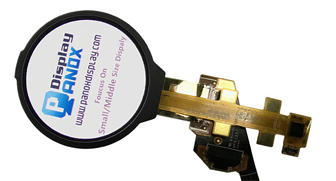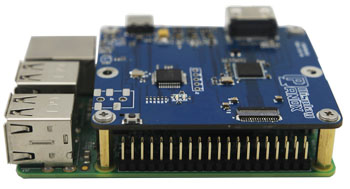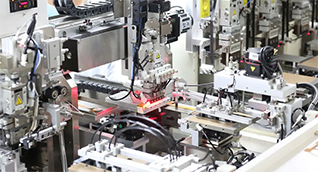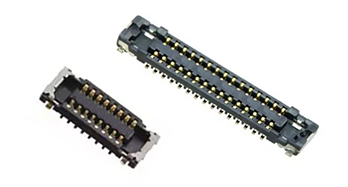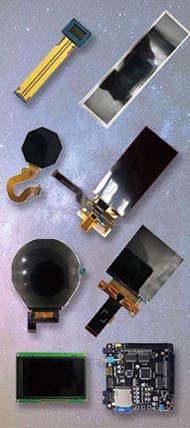A mobile display panel is the essential component of a smartphone that renders images and videos using technologies like OLED or LCD. It determines visual quality through its resolution, refresh rate, size, and brightness, impacting user experience significantly. Also check: Micro OLED
What Are the Primary Technologies Used in Mobile Display Panels?
Mobile display panels mainly use OLED (Organic Light-Emitting Diode) and LCD (Liquid Crystal Display) technologies. OLED displays generate light per pixel, enabling deeper blacks and better power efficiency, while LCDs rely on a backlight shining through liquid crystals, offering consistent brightness and typically better visibility outdoors.
How Do OLED and LCD Displays Differ in Key Features?
| Feature | OLED | LCD |
|---|---|---|
| Backlight | No backlight needed as each pixel emits light | Requires dedicated backlight |
| Black Levels | True blacks due to pixels turning off | Greyish blacks due to light leakage |
| Power Use | More efficient, especially with dark content | Less efficient due to constant backlight |
| Color | Vibrant, high saturation | More natural, accurate colors |
| Brightness | High peak, less sunlight friendly | Generally very bright, better in sunlight |
| Thickness | Thinner, lighter, flexible | Thicker due to multiple layers |
| Burn-in Risk | Possible ghost images with static images | No permanent burn-in |
| Cost | More expensive manufacturing | Less expensive |
Which Variants of OLED and LCD Are Common in Smartphones?
Notable variants include:
-
AMOLED: Active-Matrix OLED with fast pixel switching, developed by Samsung.
-
Super AMOLED: Integrates touch sensors into the display for thinner panels.
-
IPS-LCD: LCD with enhanced color and wide viewing angles.
-
Mini-LED: Uses thousands of tiny LEDs for precise backlight control.
-
Micro-LED: Emerging self-emissive tech combining OLED benefits with improved longevity and brightness.
What Are the Key Specifications to Look for in a Mobile Display Panel?
Important specifications to assess include:
-
Resolution: Determines image sharpness by pixel count.
-
Pixel Density (PPI): Pixels per inch, higher PPI means crisper images.
-
Refresh Rate: Measures screen updates per second; 90Hz or 120Hz offers smoother motion.
-
Brightness (Nits): Crucial for outdoor visibility; higher nits mean brighter screen.
-
Aspect Ratio: The shape of the screen, commonly 18:9 or 21:9 for modern phones.
How Are Future Mobile Display Technologies Evolving?
Mobile displays are advancing with innovations such as:
-
Foldable and Rollable Displays: Enabled by flexible OLEDs, allowing new device formats.
-
Under-Display Cameras: Achieving seamless, uninterrupted full screens.
-
Transparent OLEDs (TOLED): For augmented reality and innovative applications.
-
AI-Driven Smart Displays: Automatically adjust brightness and color based on environment and content.
Why Choose Panox Display for Mobile Display Panels?
Panox Display offers a comprehensive portfolio of high-quality OLED and LCD panels, including custom and standard solutions. Established in Shenzhen, Panox partners with top manufacturers such as Samsung, LG, and AUO to deliver reliable displays to global markets. Their flexible MOQ and engineering support enable startups and SMEs worldwide to access cutting-edge display technology.
How Does Panox Display Support Diverse Industry Needs?
Panox Display caters to diverse sectors including wearables, automobiles, military applications, VR, and industrial uses. They provide not only panels but also complete systems with controller boards, touch panels, and accessories, backed by automated production lines capable of up to 50,000 panels daily and customized OEM services.
What Are the Benefits of OLED Displays in Mobile Devices?
OLED displays offer superior color vibrancy, true black levels, and better energy efficiency, especially when showing dark content, enhancing both visual pleasure and battery life, making them the preferred choice for many premium smartphones.
How Do LCD Displays Maintain Relevance in Mobile Tech?
Despite OLED's advantages, LCD remains favored for its brightness, cost-effectiveness, and absence of burn-in risk. Technologies like IPS-LCD and Mini-LED further improve LCD performance, ensuring they still meet varied consumer and industrial demands.
Panox Display Expert Views
"Panox Display continues to revolutionize the mobile display industry through tailored solutions that meet evolving market needs. By combining cutting-edge OLED and LCD technologies with flexible production capabilities and excellent client support, Panox empowers startups and enterprises alike. Their commitment to quality and innovation ensures their displays deliver exceptional performance across all applications, redefining visual experiences globally."
Conclusion
Mobile display panels are pivotal to smartphone performance, defined primarily by OLED or LCD technologies and key specs like resolution, refresh rate, and brightness. OLED panels provide vibrant colors and efficiency, while LCDs offer brightness and durability. Panox Display stands out as a trusted supplier delivering tailored, high-quality displays worldwide. Whether choosing OLED or LCD, understanding these technologies ensures the best device experience.
FAQs
Q1: Which display technology is better for battery life, OLED or LCD?
OLED is generally better as it can turn off pixels completely, saving power with dark images, unlike LCDs with always-on backlights.
Q2: What causes burn-in on OLED screens?
Displaying static images for prolonged periods can cause ghosting effects, known as burn-in, on OLEDs.
Q3: Are Mini-LED displays considered OLED?
No, Mini-LED is an advanced LCD technology utilizing tiny LEDs for backlighting, not self-emissive pixels like OLED.
Q4: Can Panox Display provide customized mobile panels?
Yes, Panox specializes in both standard and custom OLED/LCD panels with professional OEM services.
Q5: Why are foldable displays gaining popularity?
Flexible OLED tech enables devices that fold or roll, offering new user experiences and compact form factors.











